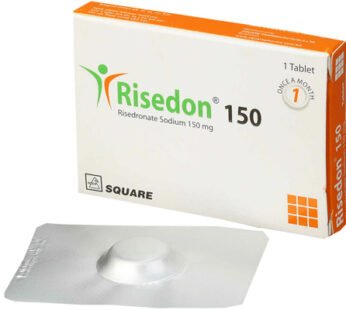Clopid-AS 75 mg+75 mg
Description
Indications
Acute Coronary Syndrome (ACS):
Clopid-AS is used to lower the risk of Myocardial Infarction (MI) and Stroke in individuals suffering from non-ST-segment elevation Acute Coronary Syndrome (ACS), which includes conditions such as unstable angina (UA) and non-ST-elevation Myocardial Infarction (NSTEMI). It is also indicated for those with acute ST-segment elevation ACS, which includes ST-elevation Myocardial Infarction (STEMI).
Recent MI, Recent Stroke, or Established Peripheral Arterial Disease:
Clopid-AS is recommended for patients with a history of recent Myocardial Infarction (MI), recent Stroke, or those with established Peripheral Arterial Disease (PAD) to help reduce the occurrence of subsequent MI and Stroke events.
Note: Always use this medication as advised by a registered healthcare provider.
Pharmacology
Clopidogrel
Clopidogrel acts as a prodrug, which means it requires metabolic activation to exert its effects. It works by inhibiting platelet activation and aggregation. Its active metabolite irreversibly binds to the P2Y12 ADP receptors on platelets, preventing platelet aggregation. Platelet aggregation inhibition begins within 2 hours of a single oral dose and reaches steady-state inhibition between Day 3 and Day 7 with daily administration of 75 mg.
Aspirin
Aspirin inhibits platelet aggregation by irreversibly blocking the cyclooxygenase enzyme (COX), thereby preventing the formation of thromboxane A2, a potent promoter of platelet aggregation and vasoconstriction.
Pharmacokinetics:
After repeated daily doses of 75 mg of Clopidogrel, plasma concentrations of the parent compound (which does not inhibit platelets) are very low, typically below the detection limit (0.00025 mg/L) 2 hours after dosing. The main active metabolite, the carboxylic acid derivative, is responsible for the platelet aggregation inhibition, making up about 85% of the circulating drug-related compounds in plasma. After a single dose, approximately 50% of the drug is excreted through urine, and about 46% is eliminated via feces.
The elimination half-life of the main metabolite is approximately 8 hours. The bioavailability of Clopidogrel is not significantly altered by food.
Absorption and Distribution:
Clopidogrel is rapidly absorbed after oral administration, with peak plasma levels of its main active metabolite occurring about 1 hour after a 75 mg dose. The pharmacokinetics of Clopidogrel metabolites show a linear relationship, meaning plasma concentrations increase in proportion to dose. The drug binds reversibly to plasma proteins, with 98% binding for Clopidogrel and 94% for the main metabolite.
Metabolism and Elimination:
Clopidogrel undergoes rapid hydrolysis in the liver to form its carboxylic acid derivative, which is the active metabolite. The glucuronide conjugate of this metabolite is also found in plasma and urine.
Dosage & Administration
The standard recommended dose of Clopid-AS is 75 mg once daily, which can be taken with or without food. Elderly patients and those with renal impairment typically do not require dosage adjustments.
For acute coronary syndrome (unstable angina/non-Q-wave MI), Clopid-AS should initially be given as a 300 mg loading dose, followed by 75 mg once daily. Aspirin (75 mg–325 mg daily) should be co-administered along with Clopid-AS for optimal effect. In clinical studies, most patients with acute coronary syndrome also received heparin acutely.
Note: Always follow the instructions provided by a registered healthcare provider when taking this medication.
Drug Interactions
- Aspirin: Aspirin does not affect the inhibition of ADP-induced platelet aggregation by Clopidogrel but can enhance Clopidogrel’s effect on collagen-induced platelet aggregation.
- Heparin: Clopidogrel does not alter the dosage requirements for heparin or affect its coagulation effects.
- NSAIDs: When taken with Clopidogrel, NSAIDs may increase the risk of gastrointestinal bleeding. These drugs should be used together with caution.
- Warfarin: The combination of Clopidogrel and warfarin should be used with caution due to the lack of established safety data.
Contraindications
Clopid-AS should not be used in patients who:
- Are hypersensitive to Clopidogrel, aspirin, or any component of the formulation.
- Have active pathological bleeding (such as peptic ulcer or intracranial hemorrhage).
Side Effects
Clopid-AS is generally well tolerated, but some individuals may experience side effects. If any adverse reactions occur, consult a healthcare professional.
Pregnancy & Lactation
- Pregnancy: There is insufficient data from well-controlled studies in pregnant women. Use Clopid-AS during the first and second trimesters of pregnancy only if the potential benefits outweigh the risks. It is contraindicated during the third trimester.
- Lactation: It is unknown whether Clopidogrel is excreted in human breast milk. However, aspirin is known to be present in breast milk. Therefore, Clopid-AS should not be used during breastfeeding.
Precautions & Warnings
- Clopid-AS may increase the bleeding time, making bleeding more difficult to control.
- Thrombotic Thrombocytopenic Purpura (TTP): Rare cases of TTP have been reported after Clopid-AS use.
- Reye’s Syndrome: Reye’s Syndrome can develop in children with viral infections (like chickenpox or influenza) who take aspirin.
- Hypersensitivity reactions such as rashes, angioedema, or hematologic reactions may occur, especially in patients with prior sensitivity to other thienopyridines.
Use in Special Populations
- Children: Clopid-AS is not recommended for children under 12, as aspirin can contribute to the development of Reye’s syndrome in certain pediatric patients.
Overdose Effects
- Clopidogrel Overdose: Can result in bleeding complications. Platelet transfusion may help restore normal clotting function.
- Aspirin Overdose: Symptoms of mild overdose include dizziness, headache, tinnitus, and gastrointestinal discomfort, which can be treated with vomiting and gastric lavage if necessary. Severe overdose may lead to metabolic acidosis, respiratory issues, and dehydration. In such cases, hemodialysis and supportive treatment are recommended.
Therapeutic Class
- Anti-platelet drugs
Storage Conditions
Store in a cool, dry place below 30ºC, away from light and moisture. Keep out of the reach of children.









Reviews
There are no reviews yet.